
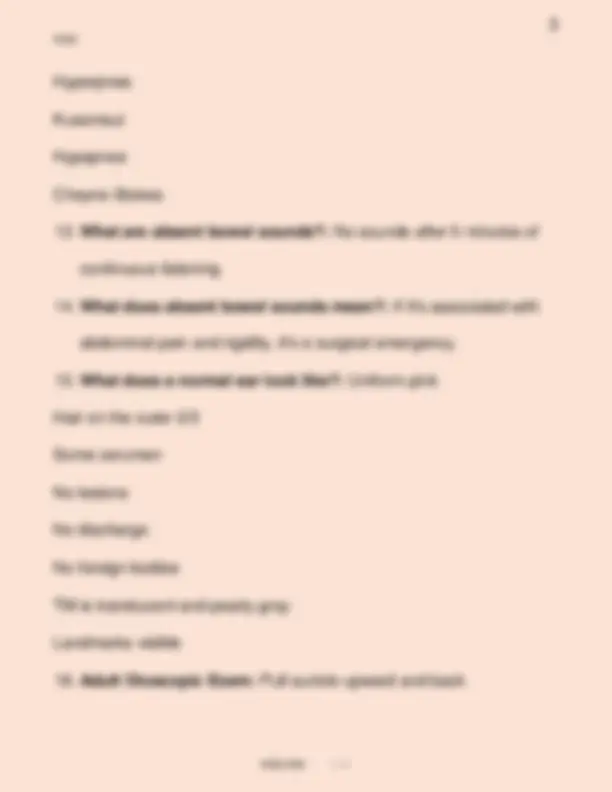
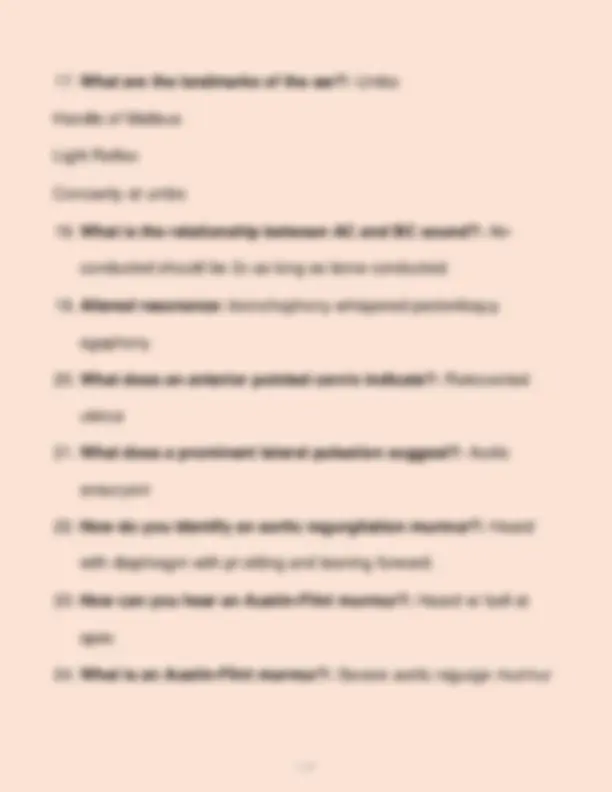
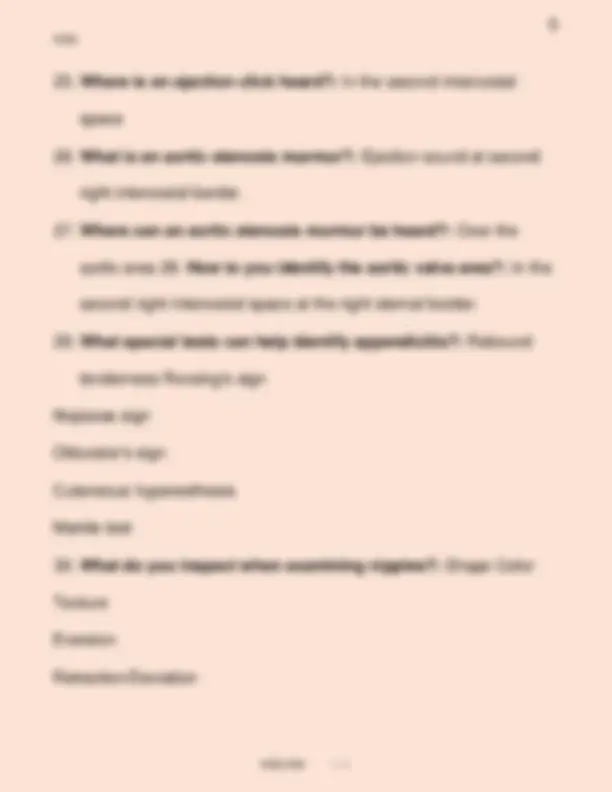
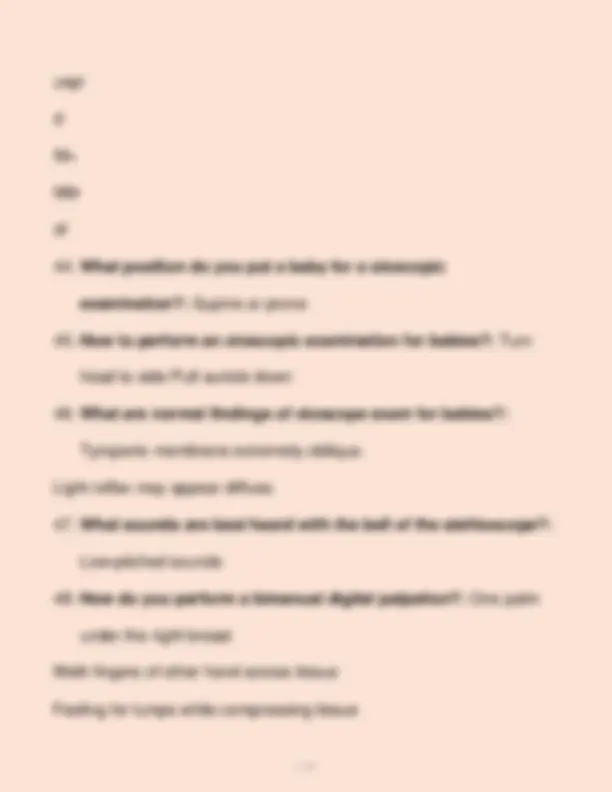
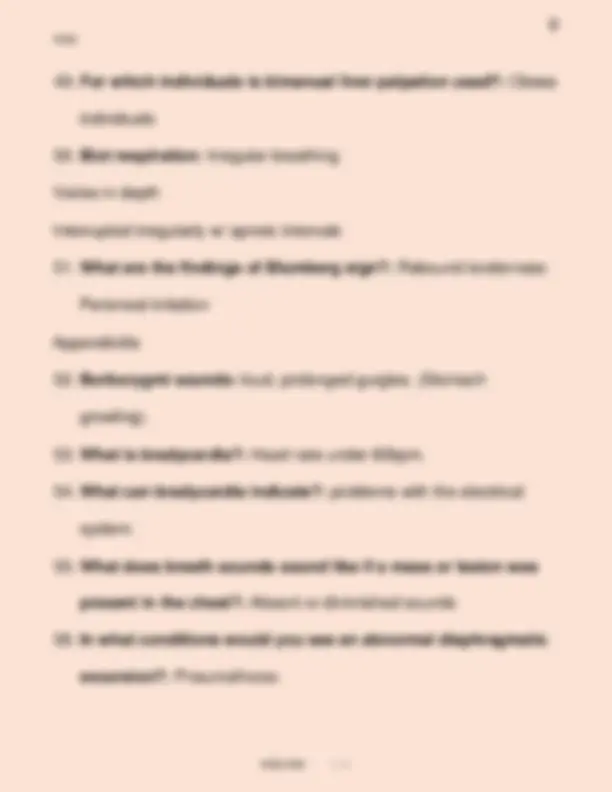
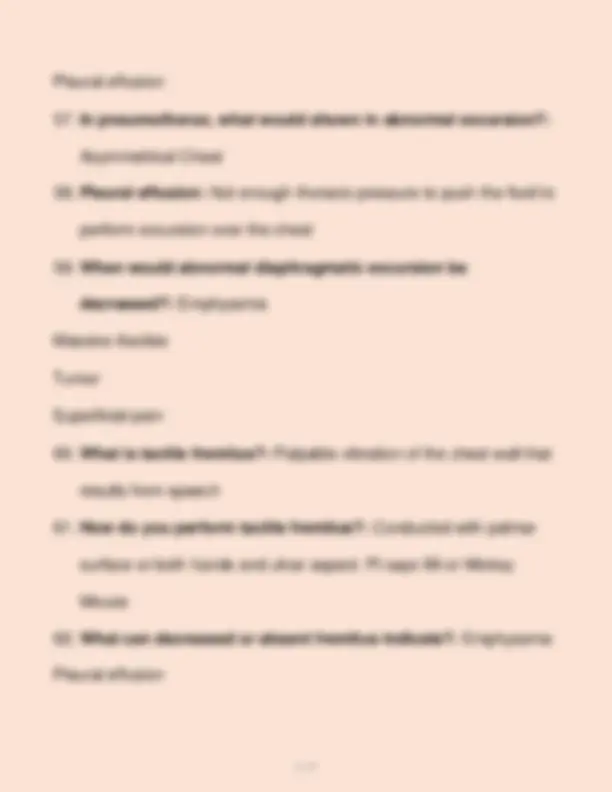
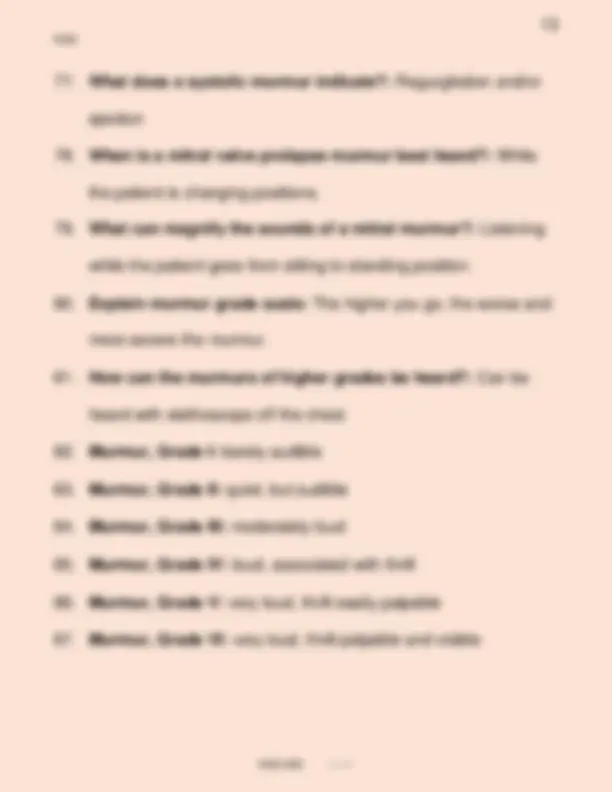
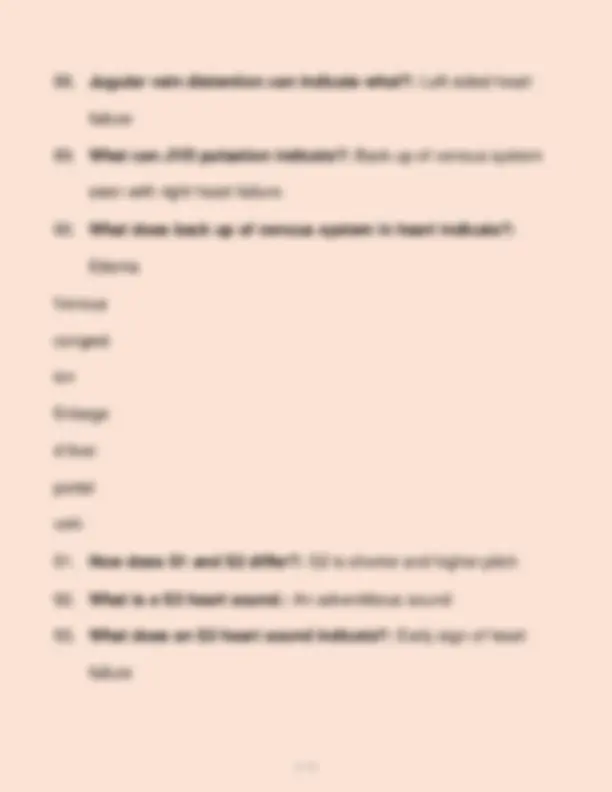
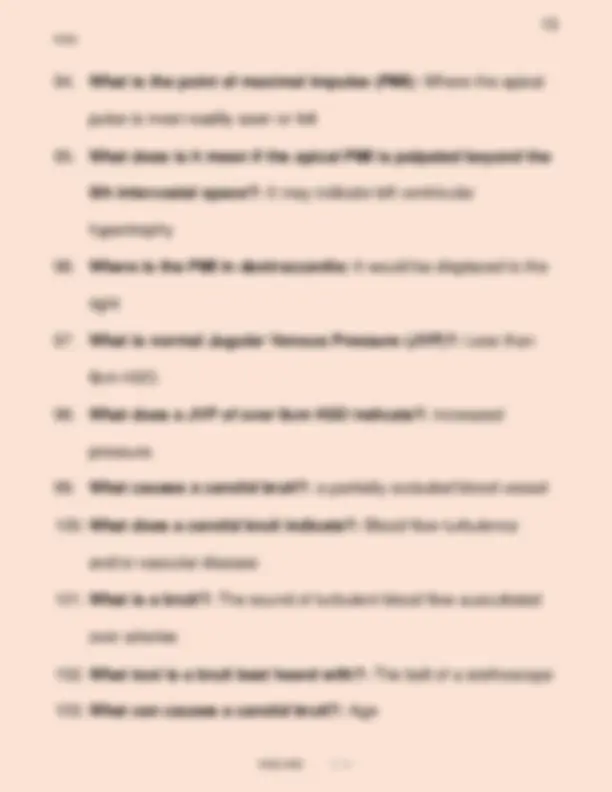
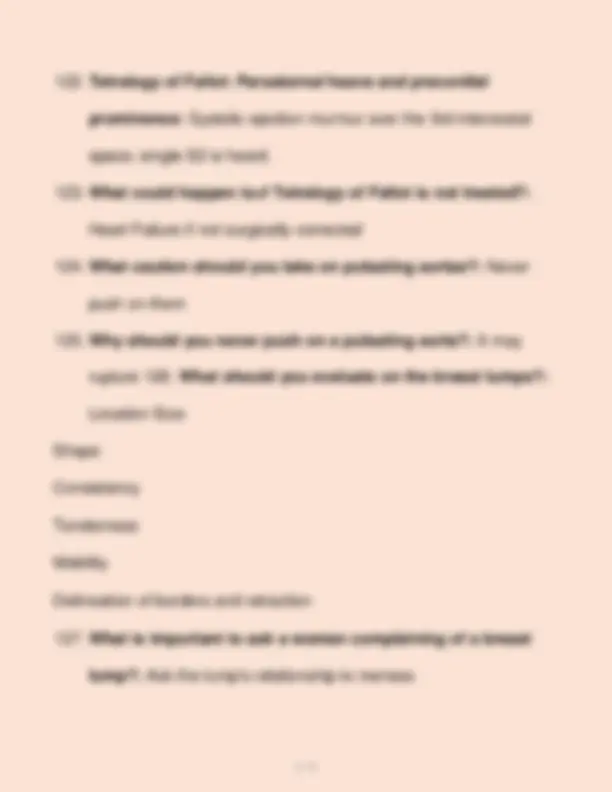
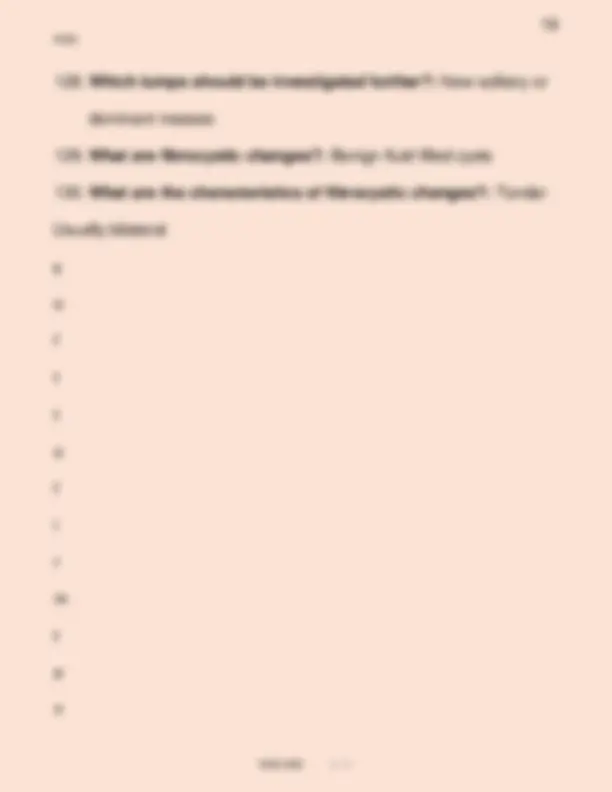

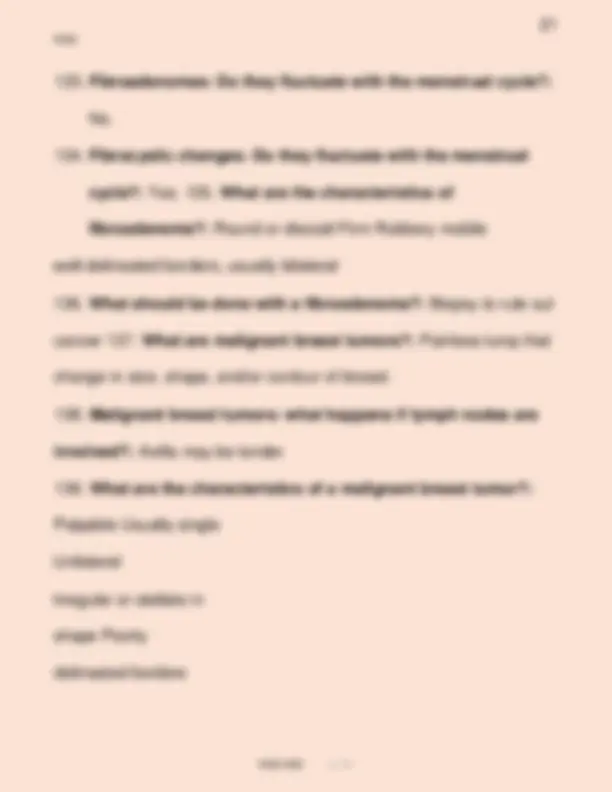

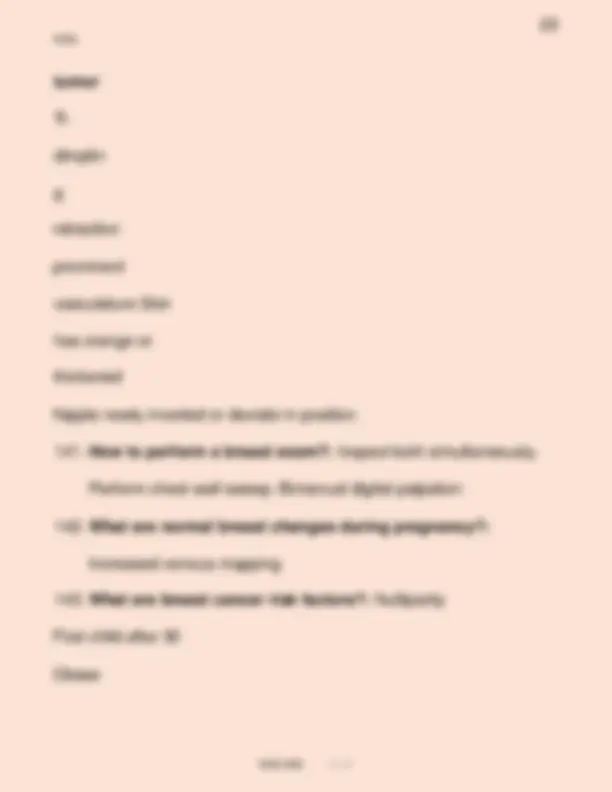
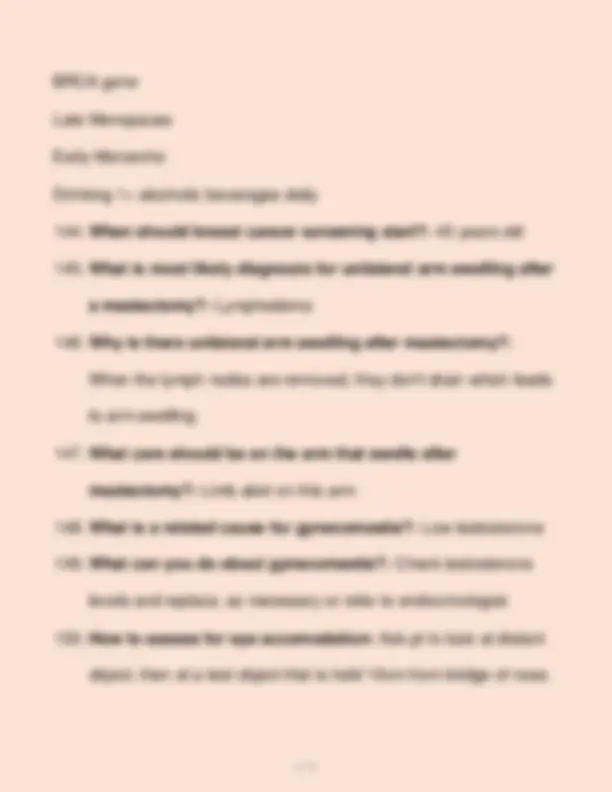
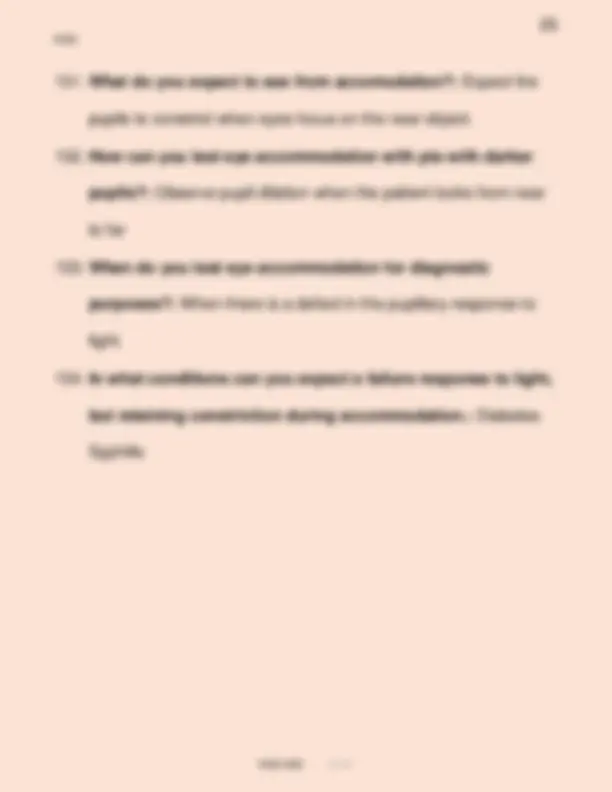
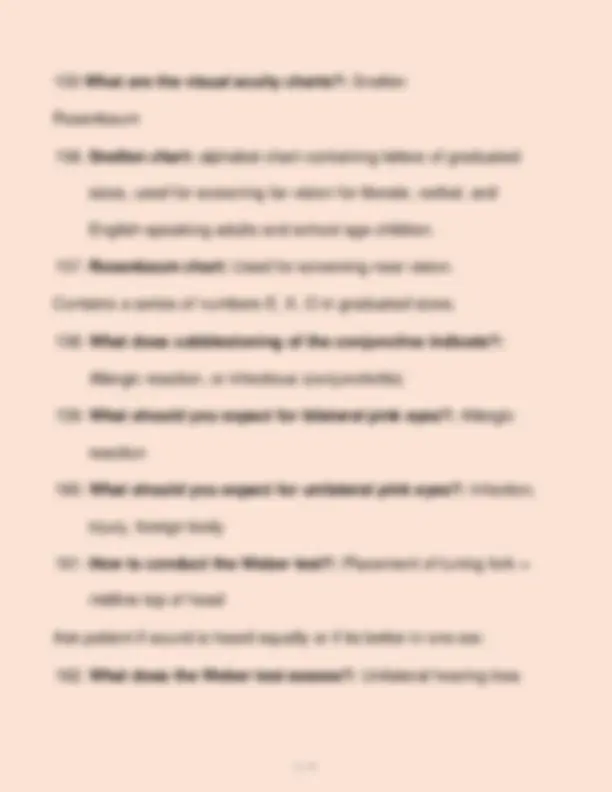
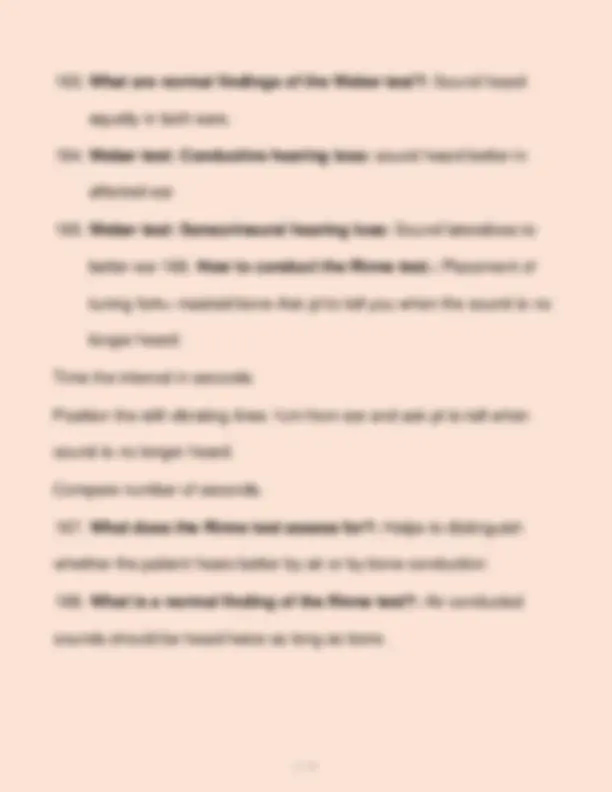
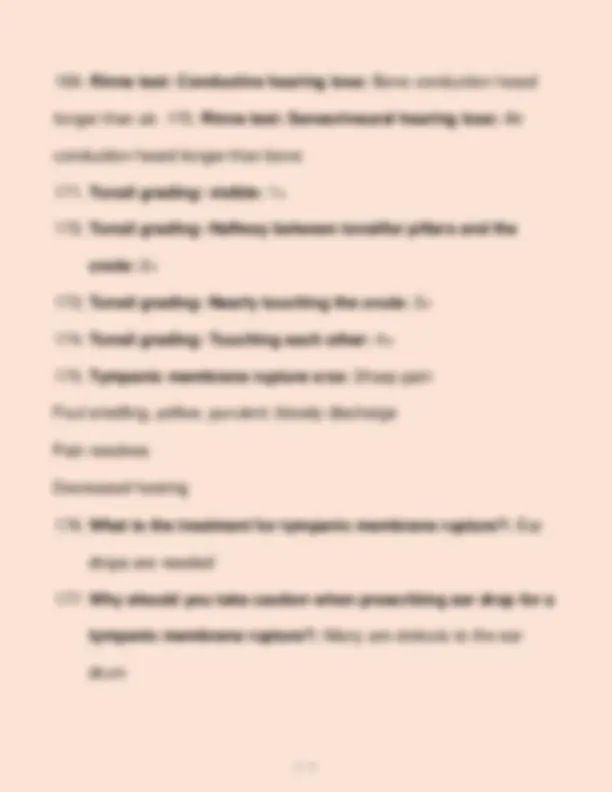
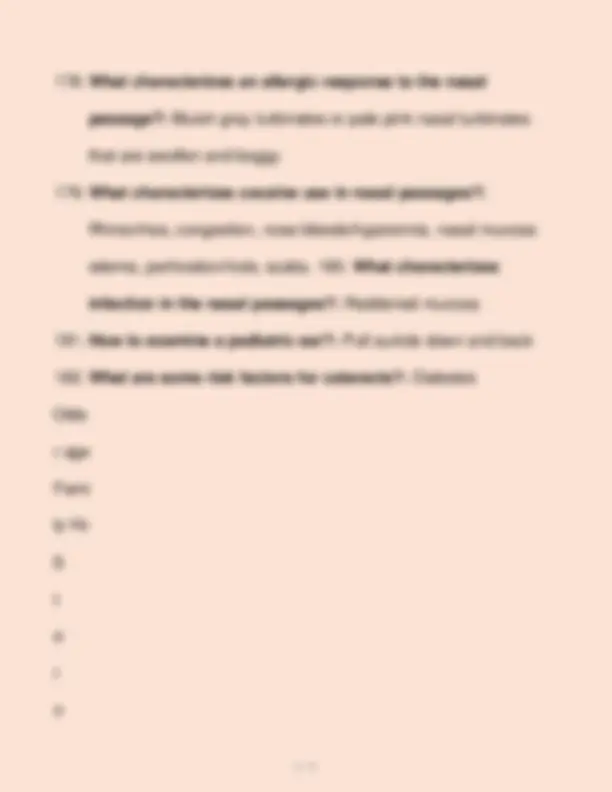
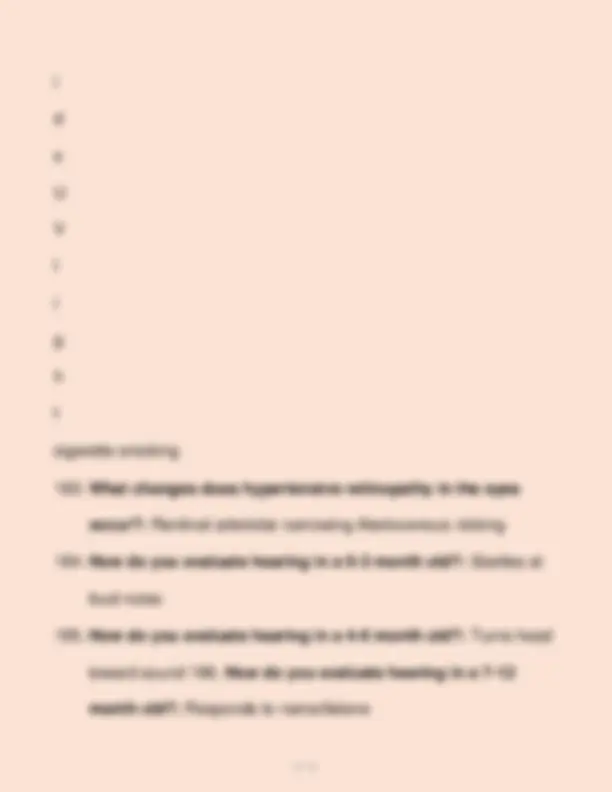
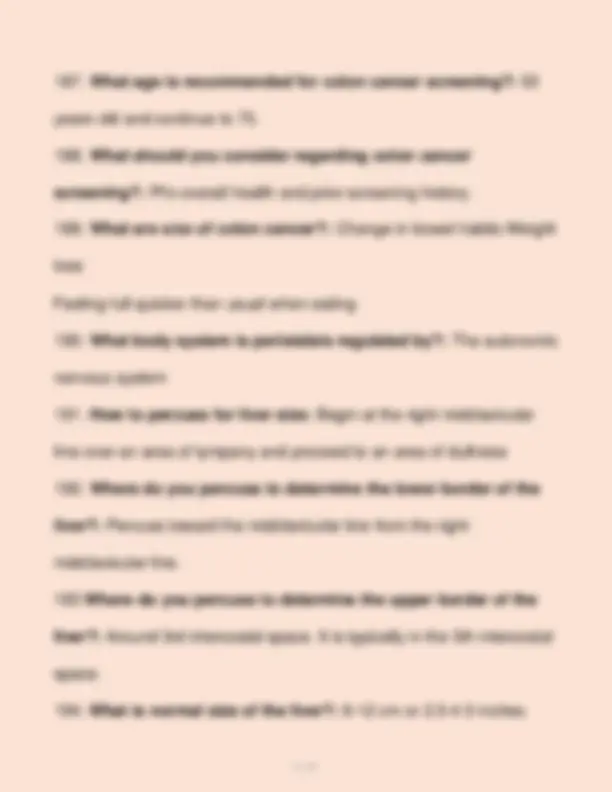
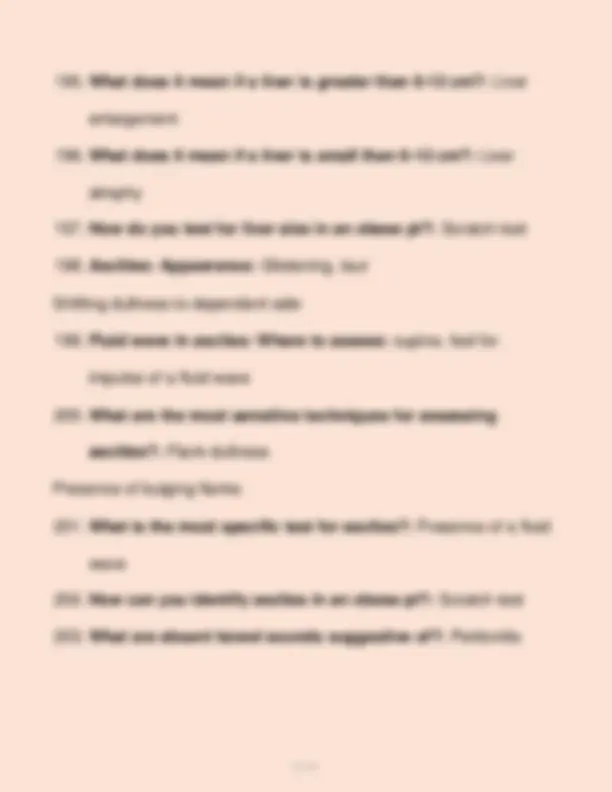
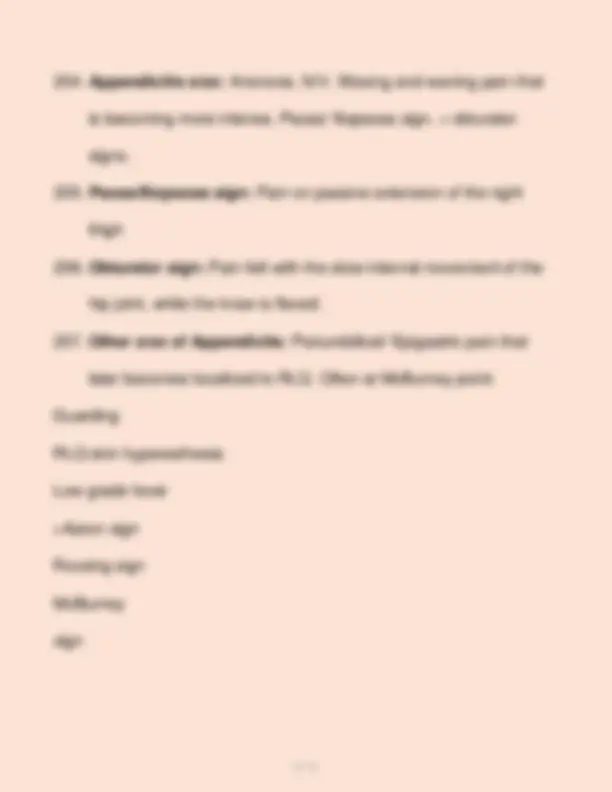
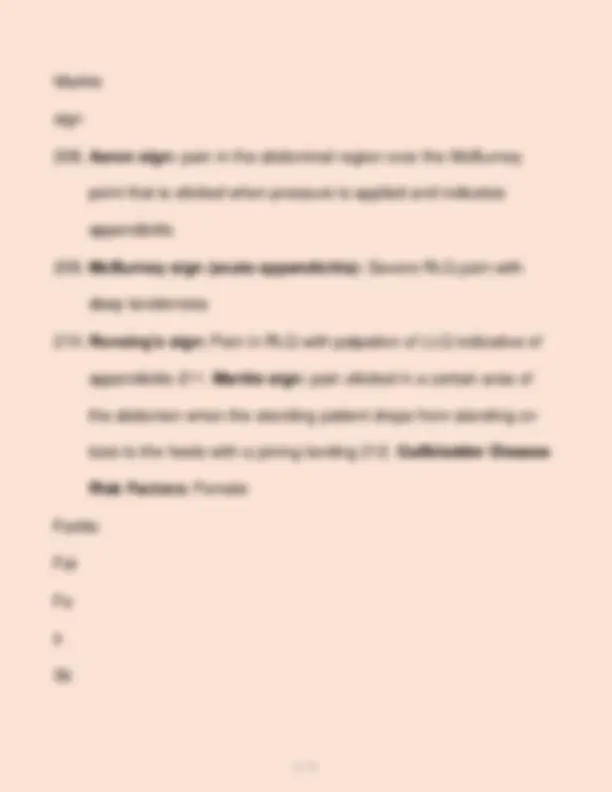
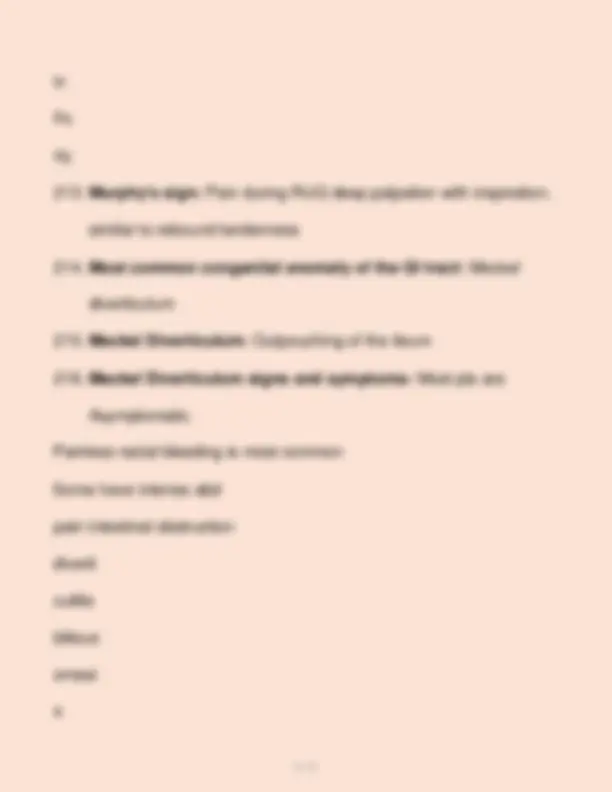
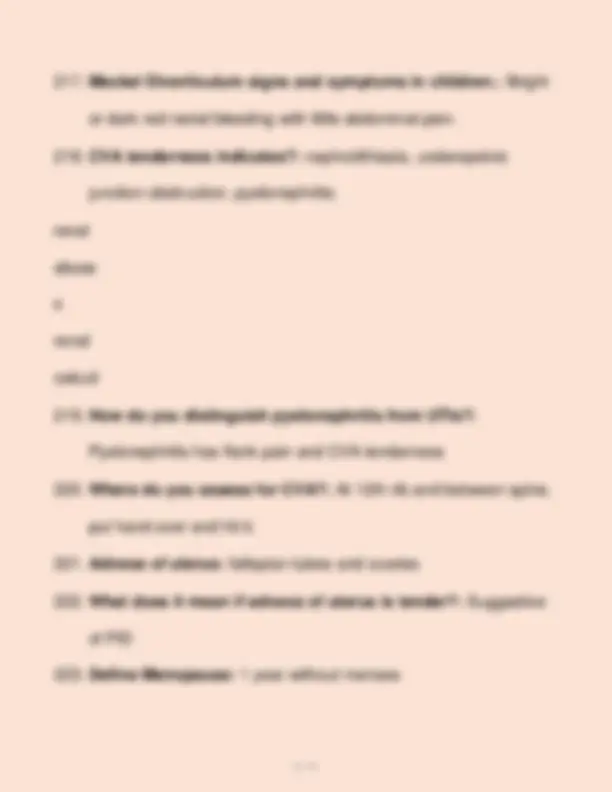
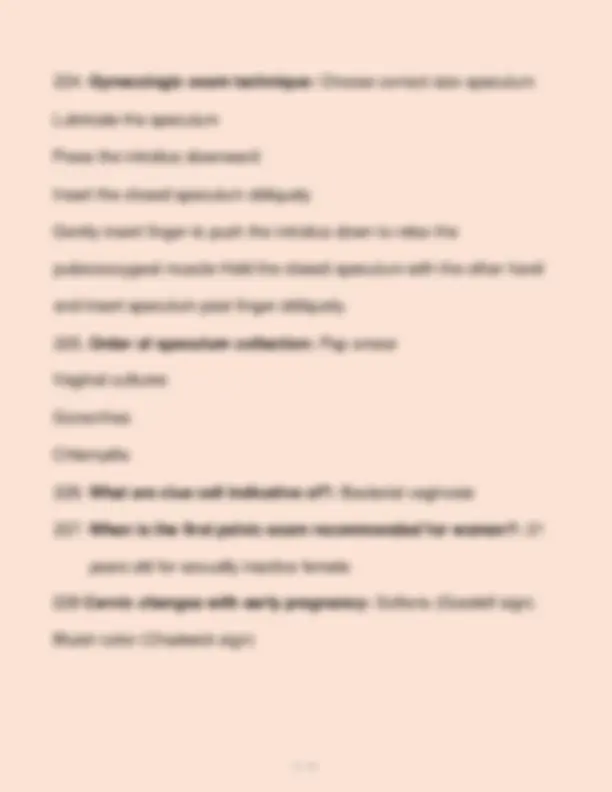
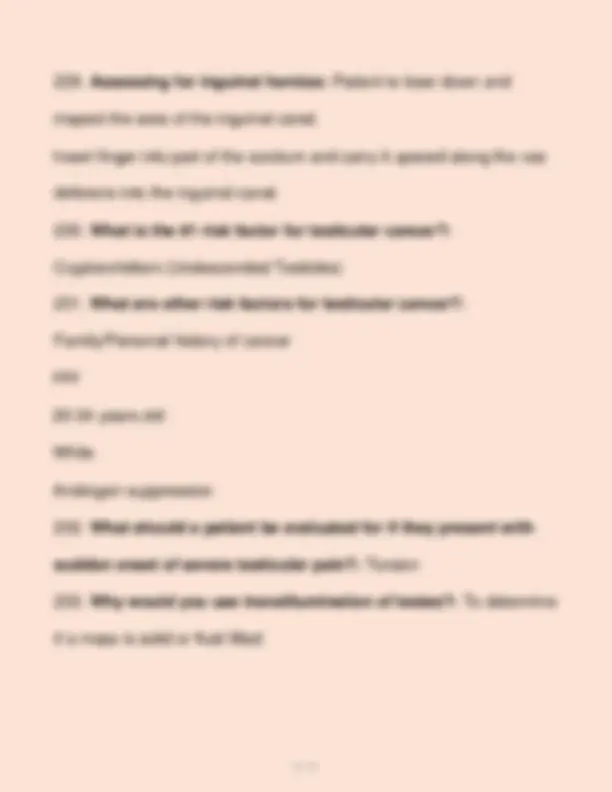



Study with the several resources on Docsity

Earn points by helping other students or get them with a premium plan


Prepare for your exams
Study with the several resources on Docsity

Earn points to download
Earn points by helping other students or get them with a premium plan
Community
Ask the community for help and clear up your study doubts
Discover the best universities in your country according to Docsity users
Free resources
Download our free guides on studying techniques, anxiety management strategies, and thesis advice from Docsity tutors
1. What is the normal RR to HR ratio?: 1:4 2. How much should the lower border of the liver drop with deep breath?: 2-3 cm 3. Distance person is from chart is what a normal person can see at 20 feet: 20/20 vision 4. Abnormal breath sounds: Crackles Rhonchi Wheezes Friction Rub Mediastinal crunch 5. What sound indicates COPD/Emphysema or restrictive lung disease?: Decreased diaphragmatic excursion
Typology: Exams
1 / 39

This page cannot be seen from the preview
Don't miss anything!
































NSG NSG 500 1 /^39
2 / 39
4 / 39
NSG NSG 500 5 /^39
NSG NSG 500 7 /^39
8 / 39 uspi d M= Mitr al
10 / 39 Pleural effusion
NSG NSG 500 11 /^39 Bronchial obstruction Excess air COPD = related to alveoli collapse.
NSG NSG 500 13 /^39
14 / 39
16 / 39 High cholesterol
NSG NSG 500 17 /^39
NSG NSG 500 19 /^39
20 / 39 s e r o u n d m o b i l e well-delineated borders